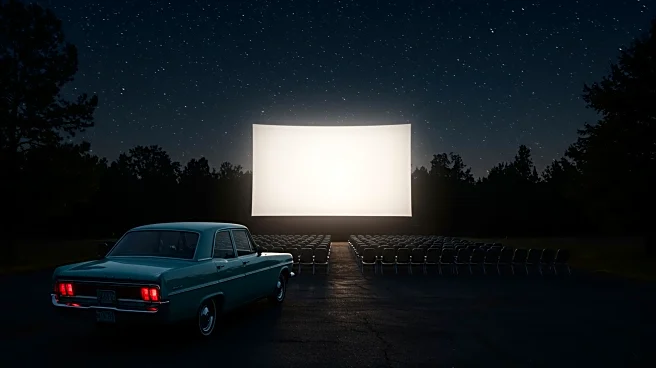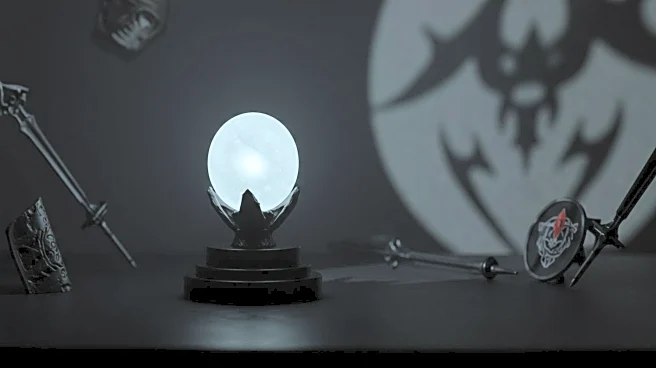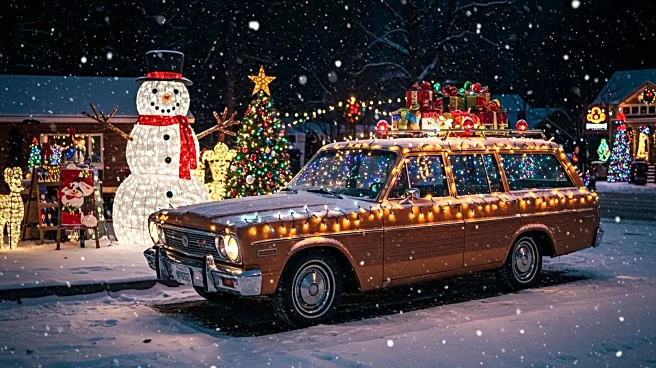What's Happening?
Drive-in movie theaters saw a significant increase in popularity during the COVID-19 pandemic, as they provided a socially distanced entertainment option. During the height of the pandemic, drive-ins accounted for 85% of box office revenue in the U.S., a stark contrast to the 2.9% during the same period in 2019. However, as restrictions eased, traditional cinemas regained their audience, leading to a decline in the number of operational drive-ins. By 2024, the number of drive-ins had decreased to 283 from 318 in 2021. Despite this, some drive-ins continue to thrive by offering nostalgic and retro content, appealing to a sense of nostalgia among moviegoers.
Why It's Important?
The resurgence of drive-in theaters highlights the adaptability of the entertainment industry in response to public health crises. While the pandemic initially threatened the viability of movie theaters, drive-ins provided a lifeline, demonstrating the importance of flexible business models. The decline in drive-in numbers post-pandemic reflects broader trends in consumer behavior and the challenges faced by niche entertainment venues in maintaining relevance. The situation underscores the need for innovation and diversification in the entertainment sector to cater to evolving audience preferences.
What's Next?
The future of drive-in theaters remains uncertain as they compete with traditional cinemas and streaming services. Some drive-ins are attempting to sustain interest by hosting themed events and screenings of classic films. The success of these initiatives will depend on their ability to attract younger audiences and leverage the nostalgia factor. Additionally, the economic viability of drive-ins will hinge on their ability to maintain affordable pricing and enhance the overall customer experience.











